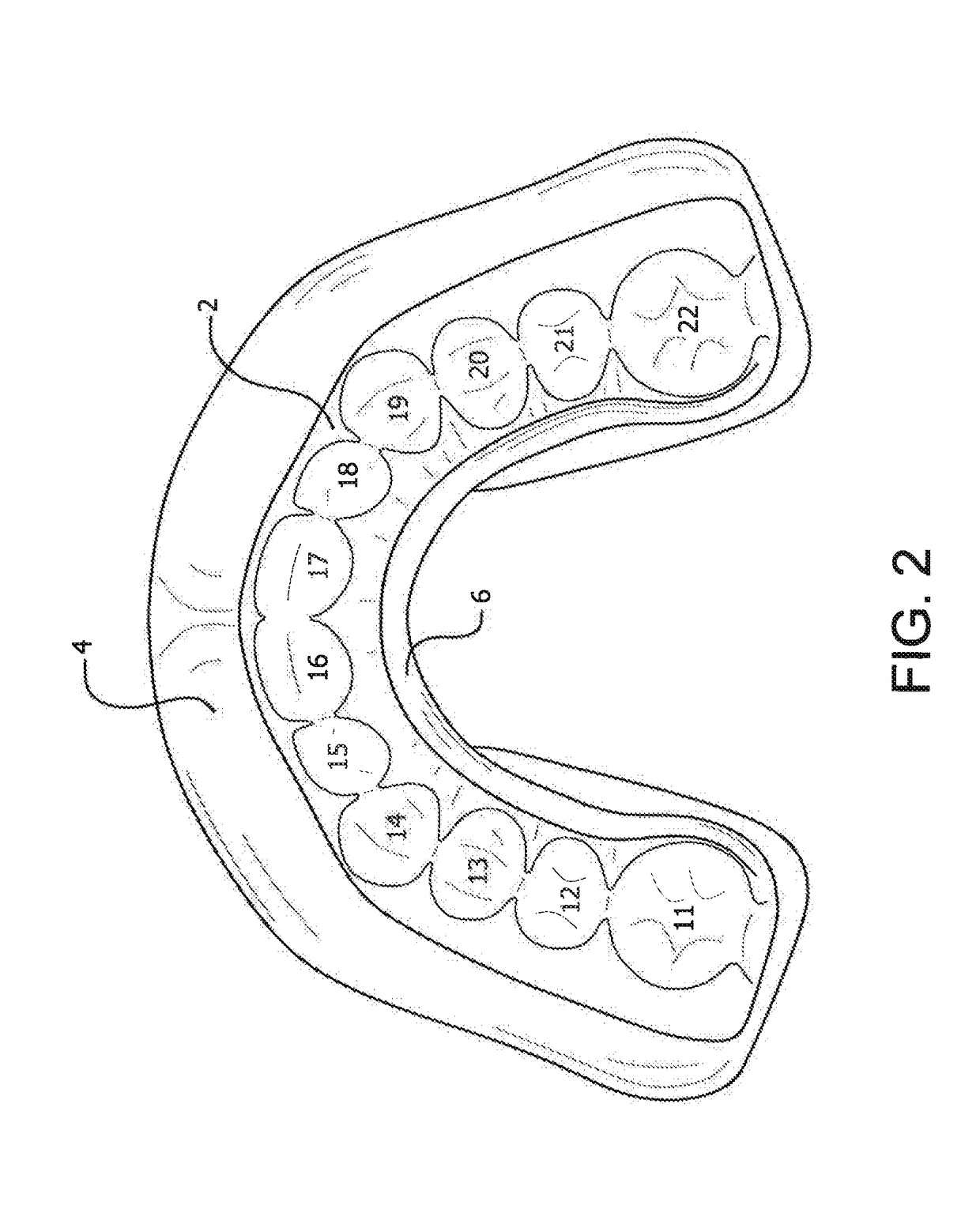Protective Mouthguard
a mouthguard and guard rail technology, applied in the field of mouthguards, can solve the problems of increasing the likelihood of an individual being unconscious, affecting the safety of individuals, so as to stabilize the lower jaw, prevent lateral displacement of the lower jaw, and minimize the effect of single arch upper mouthguards
- Summary
- Abstract
- Description
- Claims
- Application Information
AI Technical Summary
Benefits of technology
Problems solved by technology
Method used
Image
Examples
Embodiment Construction
[0014]Mouthguard 1 of the present invention is custom sized to a user's dentition, i.e. the configuration of the user's upper and lower incisors, canines, bicuspids, and molars.
[0015]Mouthguard 1 comprises upper mouthguard section 2 having mouthguard defining outer buccal wall 4 and interior wall 6. Buccal wall 4 extends to the height of the user's vestibule V and interior wall 6 extends to a height approximately equivalent to the user's gingival margin G. (See FIG. 6). A plurality of alveoli (cavities) 11-22, located between buccal wall 4 and interior wall 6, are configured to accept the average user's upper incisors, canines, bicuspids, and no more than the first or the first and second molars.
[0016]Lower mouthguard section 24 comprises dual lateral wing sections 26 and 28 extending downwardly from upper mouthguard section 2. Wing section 26 has downwardly extending flange elements 30 and 32. A plurality of alveoli 33, 34, and 35 are located in wing section 26, between flange elem...
PUM
 Login to View More
Login to View More Abstract
Description
Claims
Application Information
 Login to View More
Login to View More - R&D
- Intellectual Property
- Life Sciences
- Materials
- Tech Scout
- Unparalleled Data Quality
- Higher Quality Content
- 60% Fewer Hallucinations
Browse by: Latest US Patents, China's latest patents, Technical Efficacy Thesaurus, Application Domain, Technology Topic, Popular Technical Reports.
© 2025 PatSnap. All rights reserved.Legal|Privacy policy|Modern Slavery Act Transparency Statement|Sitemap|About US| Contact US: help@patsnap.com



